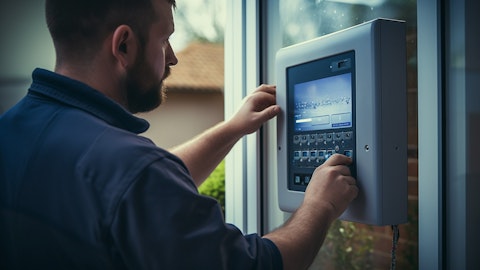Erik Richard: Okay. Very clear. Thank you. And then maybe my second question is for Hiroshi, but it’s obviously great to see and to reiterate what you just said Lucas to see you guys expecting to reach EBITDA profitability in 4Q. I think the revenue guide implies a fairly similar level of revenue in 4Q to 3Q. But obviously we need to see some improvement in the PS gross margins to reach EBITDA profitability. I think fairly sizable tick up in PS gross margins. Can you just make sure help us understand how we should think about professional services gross margins in 4Q? And really what are the tools or the levers that will help you improve that margin profile in really this three months? That would be helpful for us.
Hiroshi Okamoto: Sure. Thanks, Erik. I think in terms of the trying to get to adjusted EBITDA profitable in Q4 you hit it right on the nose is we have to improve our pro services margins. And we know that we’ve been doing this for the last quarters improving adjusted EBITDA. So we really understand the levers that we need to pull to get there now. And in terms of post professional services what it is that the variability of the margins really depends on the deployment volume still. But we’ve made — we’ve developed some technologies made some operational improvements to move that more to a variable cost basis. And one example of that is being able to monitor progress of our projects not being on site but doing it remotely. So it’s things like this that we have implemented really towards the end of Q3 where we’ll see improvements in Q4. That’s what gives us the comfort that we could get there.
Erik Woodring: Okay. Very clear. And then maybe my last question is just — it looks like hardware revenue per new unit deployed in 3Q is up pretty tremendously both year-over-year and quarter-over-quarter. First I just want to make sure I’m thinking about that correctly. And second just — I just want to better understand kind of the underlying drivers of what’s driving that strong hardware pricing because it does assume or it does imply that hardware pricing and new deployments effectively doubled in the last three months. So just trying to get to the underlying factors driving that. Thanks so much.
Hiroshi Okamoto: Yes. I think the underlying factor is that we are selling more products for customers that we’re selling to. And examples of that would be the Alloy Access and self-guided tour of some of the products that we are selling in terms of cross-sell.
Lucas Haldeman: Erik, I’ll just add a little color to that as well. I think what we’re seeing this year is also a byproduct of not being supply constrained with Alloy Access. And so a lot of our new deployments – and for a while our customers deployments are both IoT hardware and common area access control hardware. You’re also seeing a little bit of Wi-Fi hardware coming in there. So some of what’s driving it it’s not so much that hey the sort of same-store IoT hardware is dramatically different but it’s more hardware because of more products being adopted by our customer set.
Erik Woodring: Okay. Very clear. Thank you very much and congrats on the good quarter guys.
Lucas Haldeman: Great. Thanks Erik.
Operator: [Operator Instructions] Our next question comes from Sidney Ho. Your line is now open.
Sidney Ho: Hey, great. Thank you. Good morning. I have a follow-up question to the prior question on the gross margin for Professional Services. You talked about that improving in Q4 based on the actions you are taking. Can you give us a sense where gross margin could be in Q4, particularly? But also at what revenue level should we think about that business being breakeven from a gross margin perspective?


